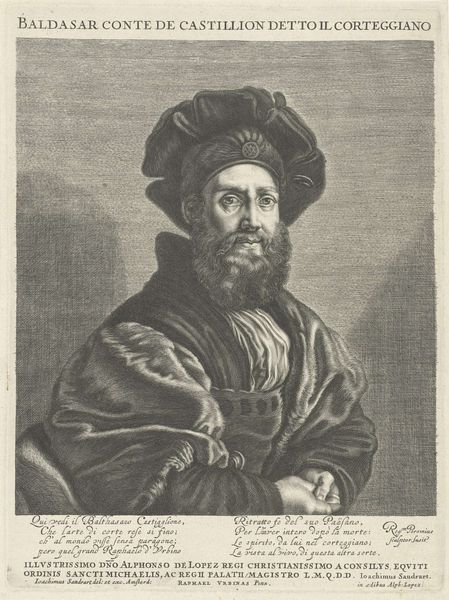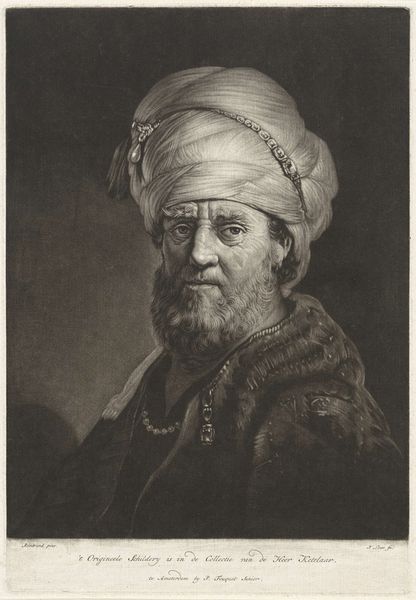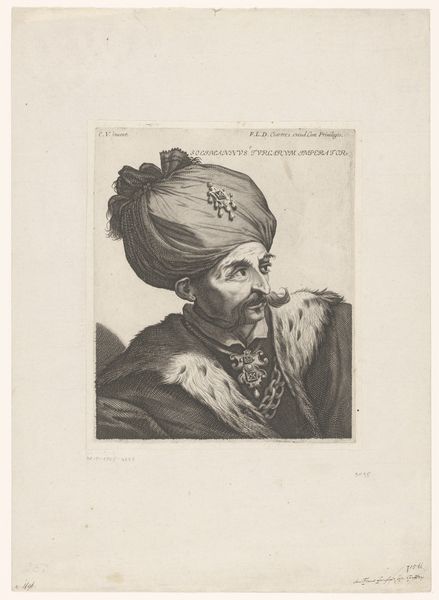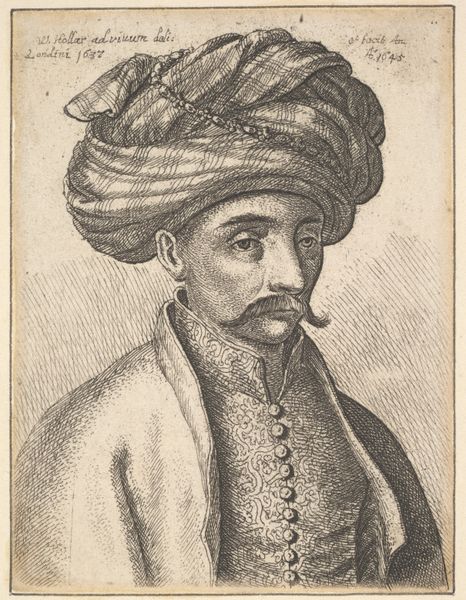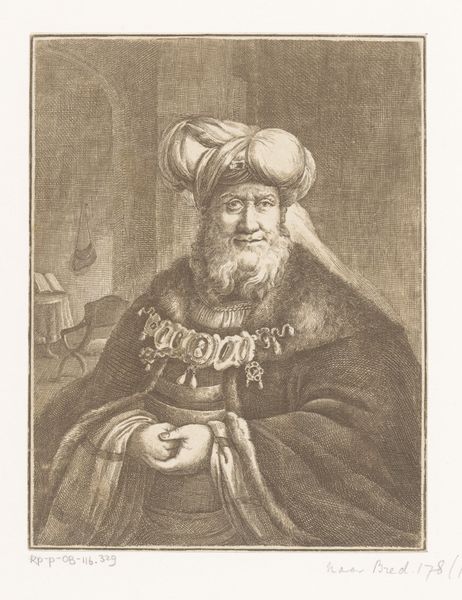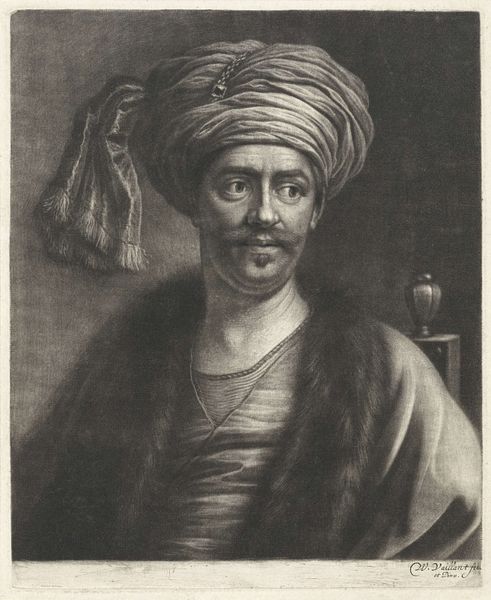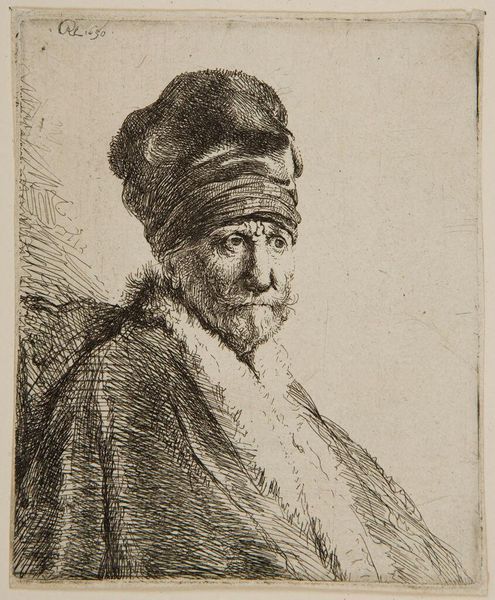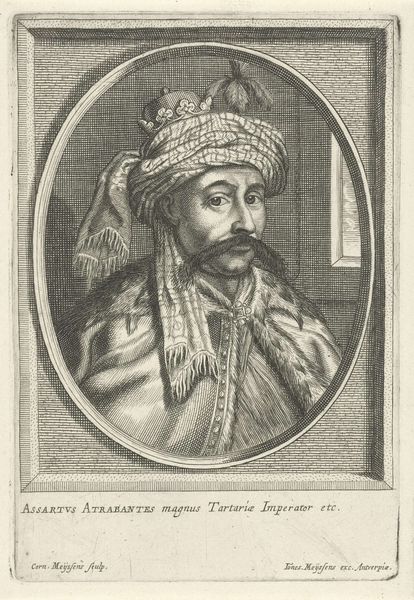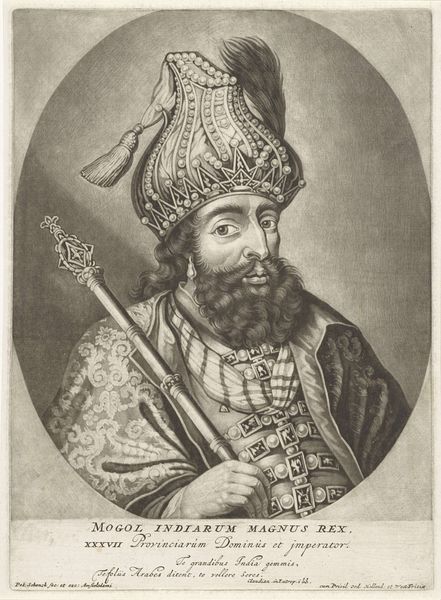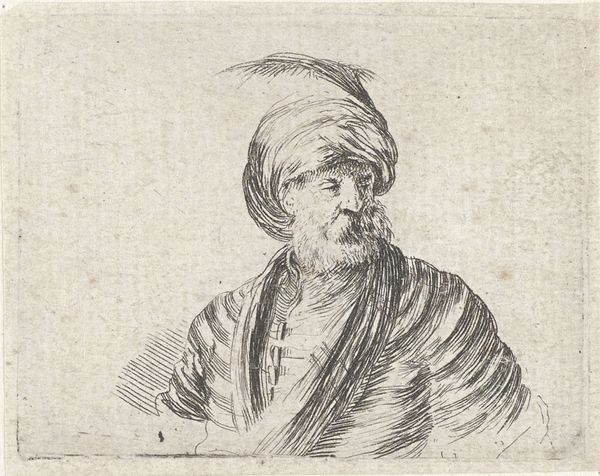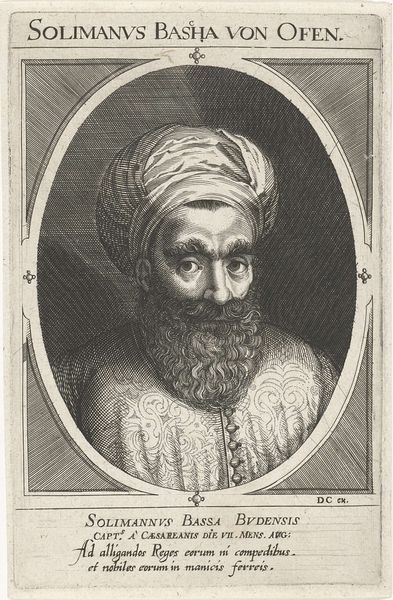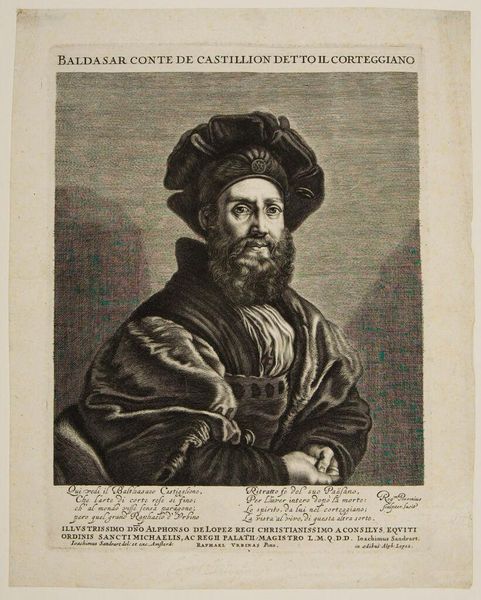
Dimensions: height 182 mm, width 157 mm
Copyright: Rijks Museum: Open Domain
Curator: This print, crafted around 1812 by Antoine Marie Labouchere, depicts an unknown man in a turban. The baroque style lends it a timeless feel. It’s fascinating to imagine the story behind those eyes. Editor: He looks weathered, doesn’t he? The eyes carry such weight, and there's a vulnerability there, too. There's also a kind of power dynamic happening; you’re clearly looking up at someone imposing. What's with the turban? Curator: Right? The turban speaks of a specific cultural and historical moment, inviting a dialogue about identity and representation. During that period, “Orientalism” influenced much artistic creation in Europe and that definitely shows up here. Think about the subject's presence. What kind of stereotypes might be present in this depiction of him? Editor: You know, I almost wonder if Labouchere might be subverting the typical power dynamic of that trope, you know? By emphasizing the subject's individual humanity. The details are so delicate. Curator: It’s so interesting you say that. If you consider his pose and direct gaze, it defies objectification. The artist perhaps sought to humanize him, maybe even subtly critique prevailing societal prejudices. This is just a print but feels more vivid! It’s quite the juxtaposition of intimacy and othering. Editor: The shading too. It almost feels like this piece is breathing. Like the man is sitting right there, waiting to tell you his story. How was it made, technically speaking? Curator: Ah, the medium used to make the artwork really stands out. This image was created using a technique called engraving. A master uses a tool to carefully carve into a metal plate which would then be filled with ink and printed onto the paper. Editor: Absolutely incredible skill to portray so much depth in monochrome! So, looking at the broader context, what conversations does this work spark in a contemporary setting, with current questions of appropriation and identity? Curator: It encourages us to question how historical portrayals can perpetuate or challenge cultural narratives. Thinking critically about representation matters. This is what makes art worthwhile, it asks questions about who we are, who we have been, and who we wish to be. Editor: A valuable insight. I love seeing it this way. Thanks!
Comments
No comments
Be the first to comment and join the conversation on the ultimate creative platform.

